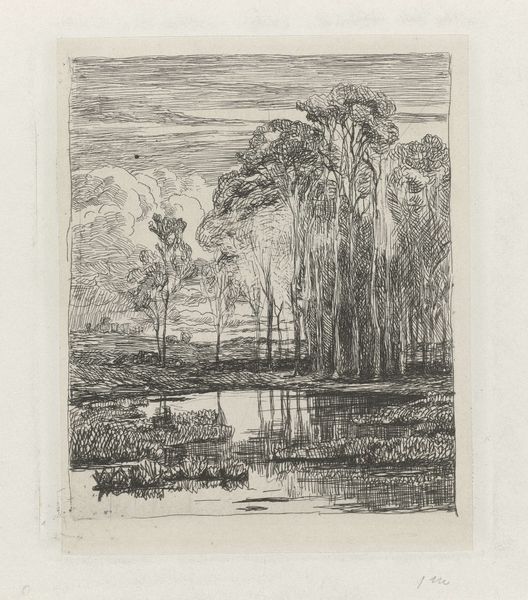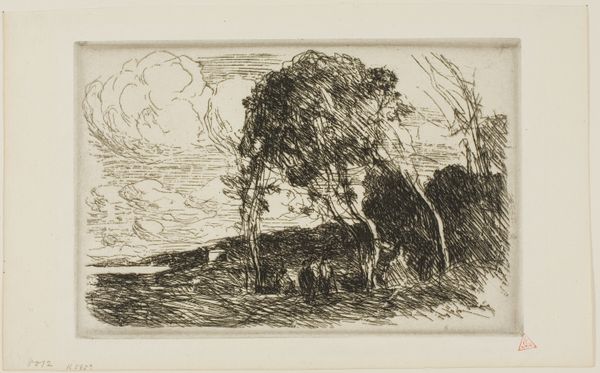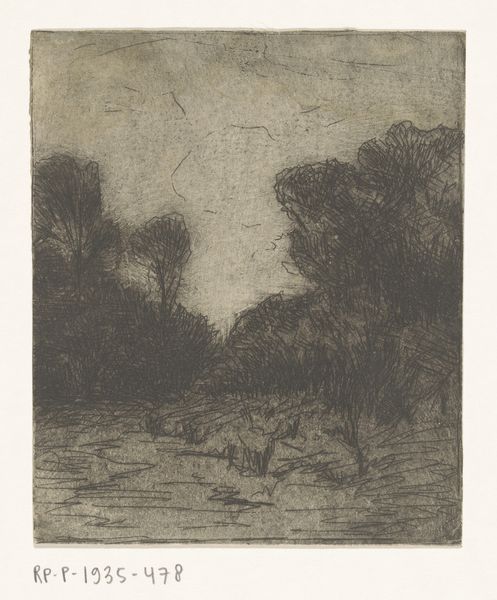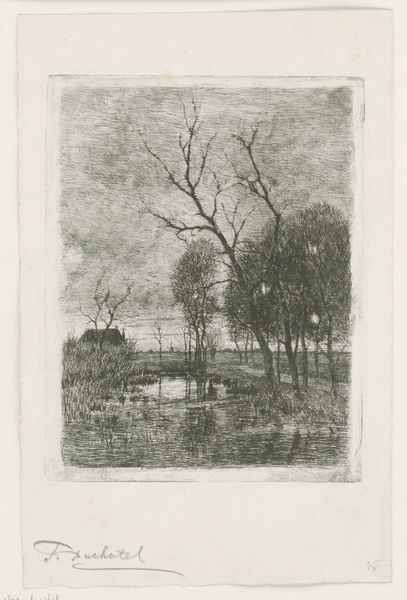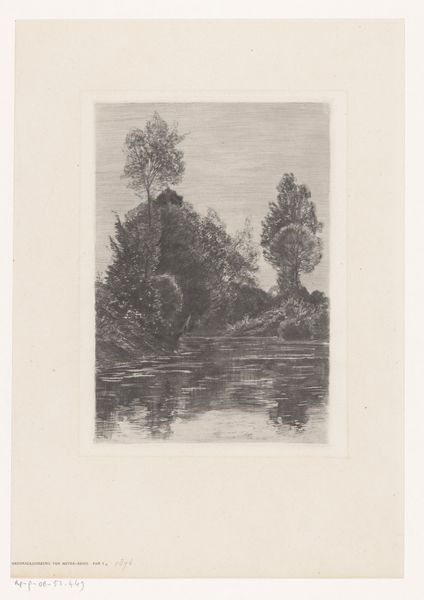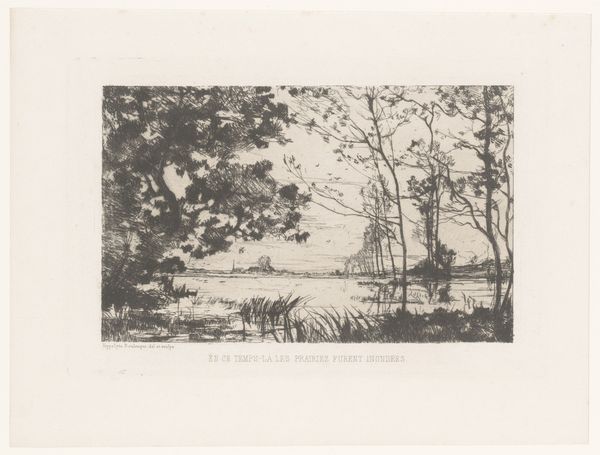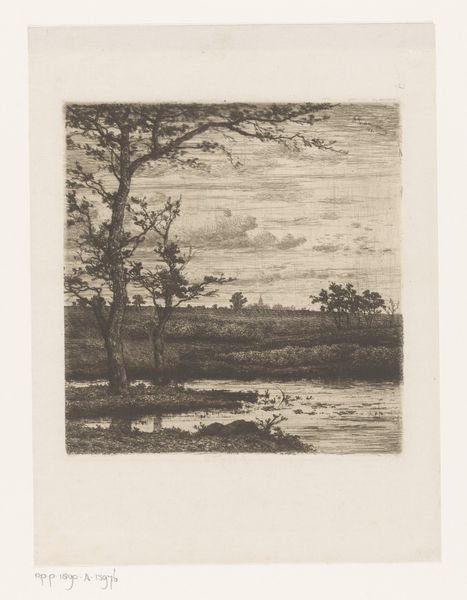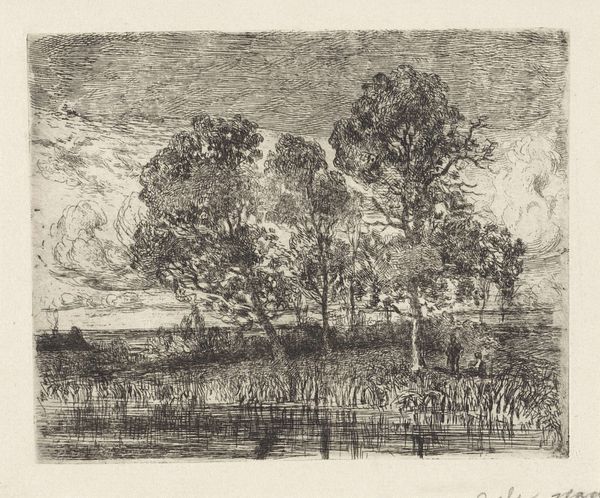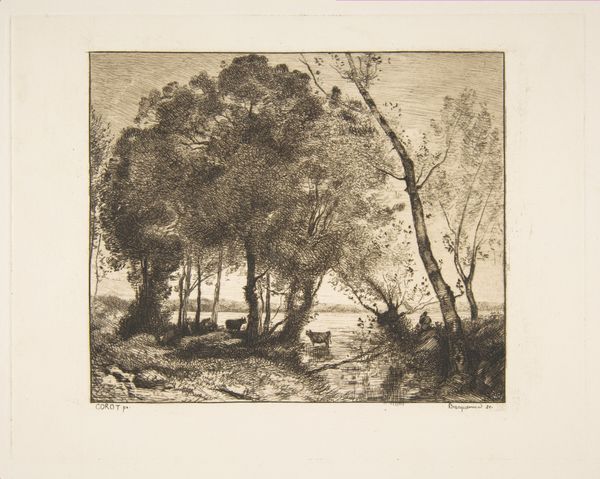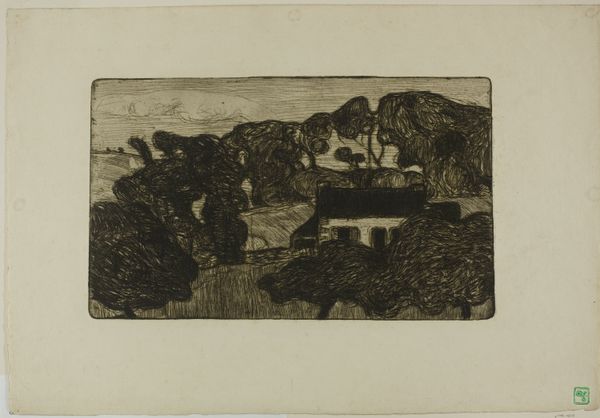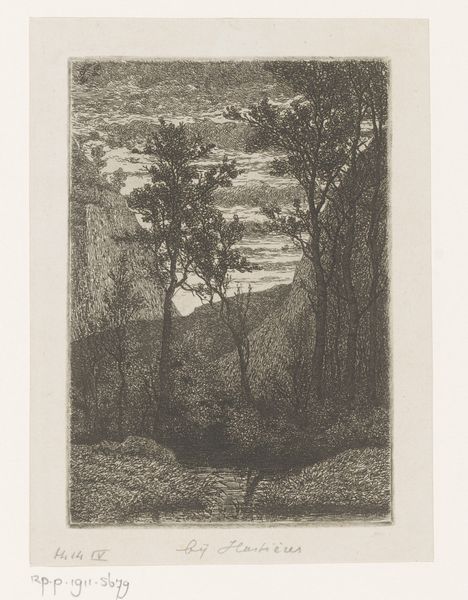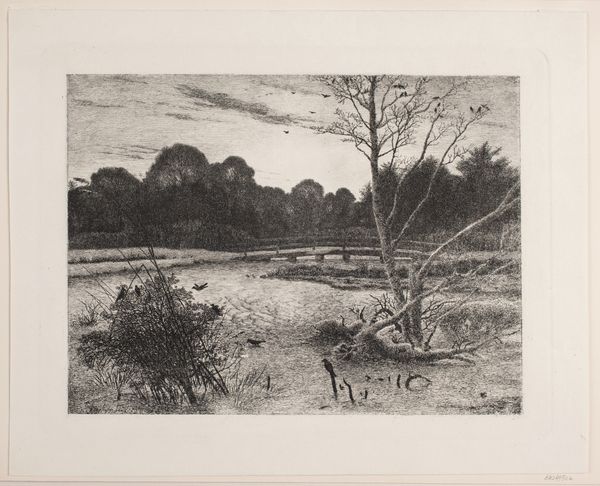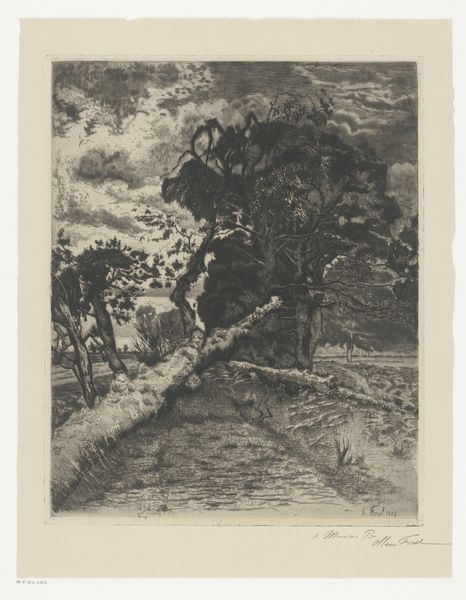
etching
#
dutch-golden-age
#
etching
#
landscape
#
realism
Dimensions: height 125 mm, width 109 mm
Copyright: Rijks Museum: Open Domain
Editor: Here we have "Populieren," created sometime between 1832 and 1893 by Willem Roelofs. It's an etching, currently residing here at the Rijksmuseum. I’m immediately struck by how the artist has created so much depth and texture using only line. It almost feels photographic. What do you notice when you look at this piece? Curator: The dominance of line is indeed striking. Notice how Roelofs meticulously employs varying densities and directions of lines to delineate the forms of the trees and their reflections. This is not merely representation; it is an exercise in the expressive potential of line itself. Consider how the stark verticality of the trees contrasts with the horizontal layering of the sky. Editor: I see that now! The sky feels very active and dynamic, compared to the relative stillness in the lower half of the composition, even with the reflections. What does that contrast create, do you think? Curator: Precisely. The interplay of line weight and direction introduces a tension—a visual oscillation between grounded stability and ethereal movement. This internal dynamic becomes, in effect, the subject. Ask yourself, what does this constructed contrast communicate beyond mere landscape? Is there a latent symbolism embedded in this structure? Editor: So it's almost like the etching itself, the physical marks, become the subject, even more so than the trees? It’s really cleverly constructed, almost like a symphony. Curator: A very apt analogy. Indeed, it transcends representation, achieving an autonomous aesthetic presence through formal arrangement. Editor: That's given me a whole new appreciation for the artistry in etching, seeing it not just as a reproductive method, but as a compositional act. Thank you!
Comments
No comments
Be the first to comment and join the conversation on the ultimate creative platform.
